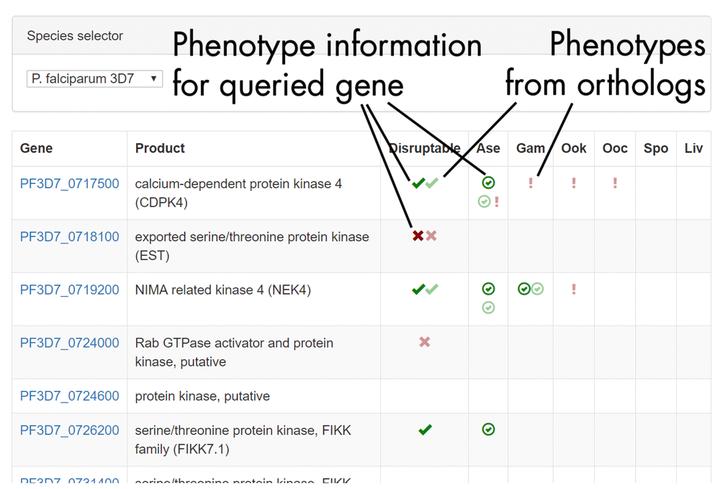
Abstract
Two decades after the first Plasmodium transfection, attempts have been made to disrupt more than 3,151 genes in malaria parasites, across five Plasmodium species. While results from rodent malaria transfections have been curated and systematised, empowering large-scale analysis, phenotypic data from human malaria parasite transfections currently exists as individual reports scattered across a the literature. To facilitate systematic analysis of published experimental genetic data across Plasmodium species, we have built PhenoPlasm (http://www.phenoplasm.org), a database of phenotypes generated by transfection experiments in all Plasmodium parasites. The site provides a simple interface linking citation-backed Plasmodium reverse-genetic phenotypes to gene IDs. The database has been populated with phenotypic data on 367 P. falciparum genes, curated from 176 individual publications, as well as existing data on rodent Plasmodium species from RMgmDB and PlasmoGEM. This is the first time that all available data on P. falciparum transfection experiments has been brought together in a single place. These data are presented using ortholog mapping to allow a researcher interested in a gene in one species to see results across other Plasmodium species. The collaborative nature of the database enables any researcher to add new phenotypes as they are discovered. As an example of database utility, we use the currently available datasets to identify RAP (RNA-binding domain abundant in Apicomplexa)-domain containing proteins as crucial to parasite survival.
Summary
PhenoPlasm is a database of all disruption phenotypes in malaria parasites. I conceived of, designed, created and continue to curate the database.